Today we present you the basic vocabulary of any catalog creator. In our field, this glossary is composed of a set of terms from the graphic design world and printing world.
After learning each definition by heart, you will be able to test the knowledge of your favorite print worker.
A0 : 841 x 1189 mm (large format printing).
A1 : 594 x 841 mm (large format printing).
A2 : 420 x 594 mm (poster size).
A3 : 297 x 420 mm (poster size).
A4 : 210 x 297 mm. The classic size of a letter.
A5 : 148 x 210 mm.
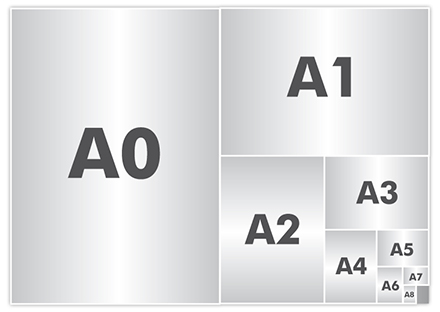
Ready for printing : represents a guarantee and an agreement between a client and a printer while validating files before sending in printing the document. This step allows the client to confirm the colors, the layout, the typography, the text and location of the images in the layout.
Bleed-off : is a printing term that refers to printing that goes beyond the edge of the sheet before trimming. In other words, the bleed is the area to be trimmed off. The bleed is the part on the side of a document that gives the printer a small amount (3 to 5 mm) of space to account for movement of the paper, and design inconsistencies. Artwork and background colors can extend into the bleed area. After trimming, the bleed ensures that no unprinted edges occur in the final trimmed document.
CMYK : this color model is a subtractive color model, used in color printing. CMYK refers to the four inks used in some color printing: cyan, magenta, yellow, and key (black). Though it varies by print house, press operator, press manufacturer, and press run, ink is typically applied in the order of the abbreviation.
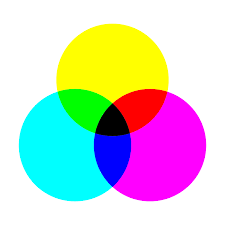
Adhesive binding : a style of binding used mainly for paperback books, where the backs of the gathered sections are trimmed and inserted into a cover along with adhesive to hold the pages and cover together.
Grain : is the paper’s roughness. A paper's grain is the direction in which most of the fibers lie. Grain is determined during the papermaking process, when fibers tend to align in one direction or the other. Paper is identified as either grain short (grain is parallel to paper's short side) or grain long (grain is parallel to the paper's long side), depending on how the paper is cut.
Offset printing : is the most common high volume commercial printing technology. In offset printing, the desired print image is burned onto a plate and is then transferred (or offset) from the plate to a rubber blanket, and then to the printing surface. The lithographic process is based on the repulsion of oil and water. The image to be printed gets ink from ink rollers, while the non printing area attracts a film of water, keeping the non printing areas ink-free.
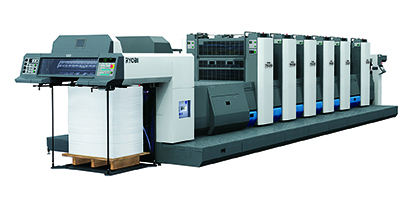
Digital printing : refers to methods of printing from a digital-based image directly to a variety of media. It usually refers to professional printing where small-run jobs from desktop publishing and other digital sources are printed using large-format and/or high-volume laser or inkjet printers.
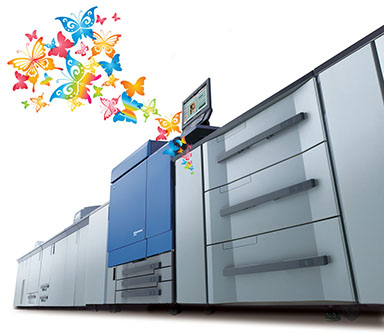
The Pantone color matching system : is a largely standardized color reproduction system. By standardizing the colors, different manufacturers in different locations can all refer to the Pantone system to make sure colors match without direct contact with one another. Pantone colors are described by their allocated number (for example, PMS 230, is a baby pink color).
Filming : this finishing step is to lay down a transparent film of cellulose, glossy or matt on paper to strengthen the fiber and provide more qualitative aspect to the prints.
Rotary press : a machine consisting of curved plates attached to a revolving cylinder that prints onto a continuous roll of paper.
RGB color model : is an additive color model in which red, green, and blue light are added together in various ways to reproduce a broad array of colors.
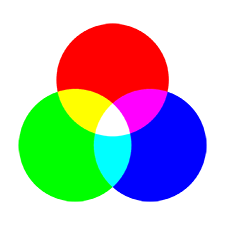
The graphic charter : is a deliverable that guarantees a project's consistent graphical identity. It defines the overall graphic, iconographic, typographic and ergonomic guidelines that should be followed on all the documents of a company.
DPI : or dots per inch is a measure of spatial printing or video dot density, in particular the number of individual dots that can be placed in a line within the span of 1 inch (2.54 cm). In printing, the resolution of an image should be 300 dpi for optimal rendering.
Layout Definition Template (LDT) : is a customized presentation file, which contains shapes which represent placeholders which will be replaced by slide thumbnails at that location with all the attributes of the placeholder in the LDT.
Visual identity : is the visible elements of a brand, such as color, form, and shape, which encapsulate and convey the symbolic meanings that cannot be imparted through words alone.
Packshot : is a photograph or short piece of film showing a product and its package in a way that can be used to advertise the product. The quality of the packshot is very important.
Have a nice day. See you soon.
Sources : Yves damin, Imprimerie Villiere, Dictionnaire de l’imprimerie